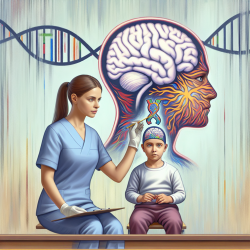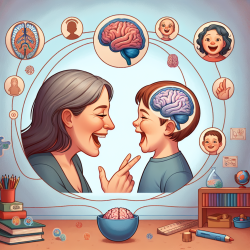Unlocking the Secrets of White Matter in 22q11.2 Deletion and Duplication
As practitioners dedicated to improving outcomes for children, it's crucial to stay informed about the latest research and its implications for our work. The study titled "Opposing white matter microstructure abnormalities in 22q11.2 deletion and duplication carriers" provides valuable insights into the neurological underpinnings of these genetic variations and their impact on white matter (WM) microstructure. Understanding these findings can enhance our therapeutic strategies and encourage further exploration in this field.
Key Findings from the Research
The study utilized advanced imaging techniques to examine the white matter in individuals with 22q11.2 deletions (22q-del) and duplications (22q-dup). Here are some of the key findings:
- 22q-del: Individuals exhibited higher fractional anisotropy (FA) in WM, suggesting densely packed white matter, potentially due to increased cerebrospinal fluid (CSF) and reduced WM volume.
- 22q-dup: Conversely, these individuals showed lower FA and greater extracellular space, indicative of demyelination, a pattern observed in various neuropsychiatric disorders.
Implications for Practitioners
Understanding these opposing patterns in WM microstructure can guide practitioners in tailoring interventions. For instance, the densely packed WM in 22q-del may require strategies that enhance neural connectivity and cognitive processing, while the demyelination observed in 22q-dup might benefit from interventions that support myelination and neural repair.
Moreover, these findings underscore the importance of considering both microstructural and macrostructural brain changes when designing therapeutic approaches. Practitioners should remain vigilant for signs of neurodevelopmental and psychiatric disorders, which are prevalent in these populations, and collaborate with interdisciplinary teams to provide comprehensive care.
Encouraging Further Research
This study highlights the need for continued research into the neurobiological mechanisms underlying 22q11.2 CNVs. Longitudinal studies could provide insights into how these WM abnormalities evolve over time and their relationship with cognitive and psychiatric outcomes. Practitioners are encouraged to contribute to this growing body of research by collaborating with researchers and sharing clinical observations.
Conclusion
By integrating these research findings into practice, we can better support children with 22q11.2 CNVs, ultimately improving their developmental trajectories and quality of life. To delve deeper into the original research, please follow this link: Opposing white matter microstructure abnormalities in 22q11.2 deletion and duplication carriers.










